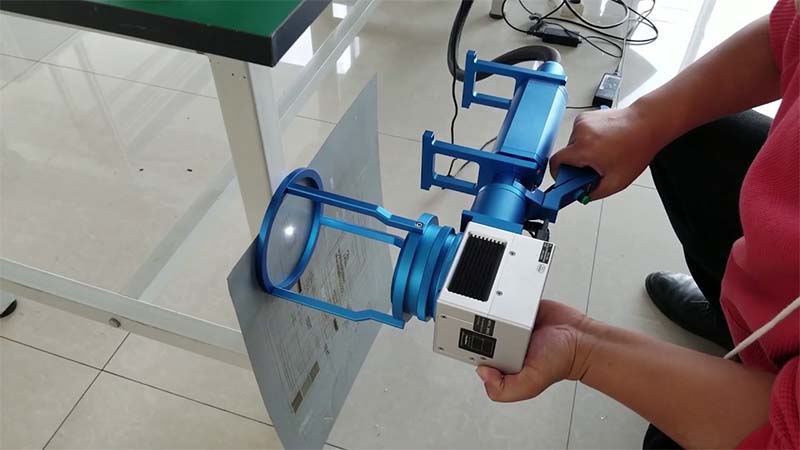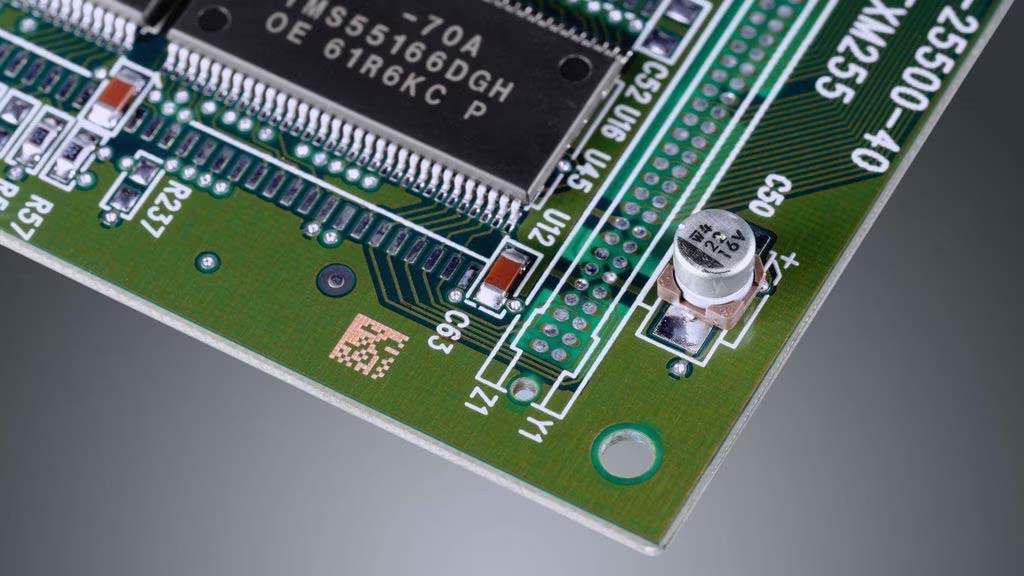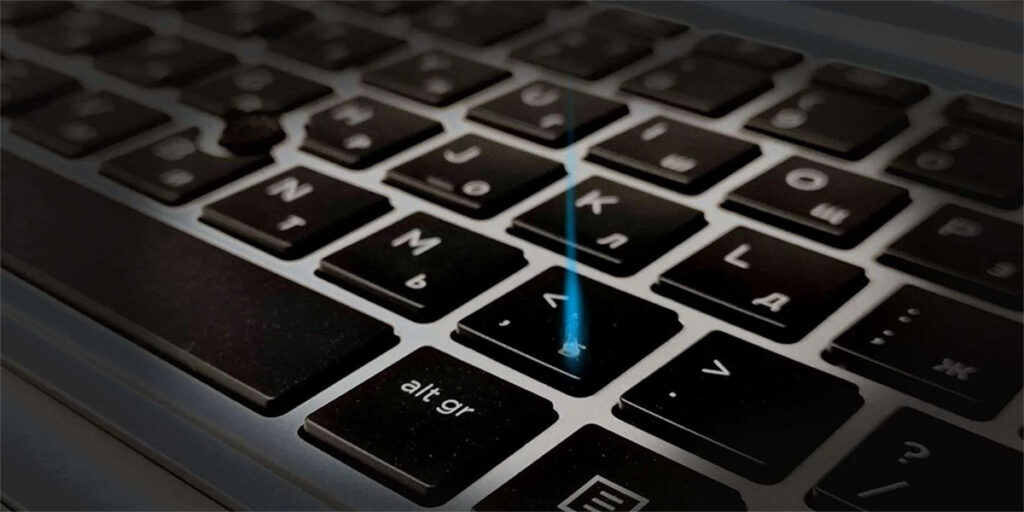Among the laser marking solutions available, the pico laser marking stands out as a frontrunner, offering unparalleled speed, precision, and versatility. This remarkable device utilizes ultra-short pulses of laser light measured in picoseconds (trillionths of a second) to create permanent markings with remarkable detail on various materials. Whether you’re a seasoned industry professional seeking to upgrade your current marking system or a curious enthusiast eager to discover the latest innovations, this article will guide you towards finding the best picosecond marking machine to suit your needs.
Why Picosecond Laser Is Innovative In Marking?
With the development of laser technology, the use of lasers in manufacturing and production has become more extensive. The diverse range of laser processing techniques has provided greater creativity in modern manufacturing. As laser technology continues to advance, it is moving towards new frontiers, transitioning from nanosecond to picosecond and femtosecond technologies. The emergence of picosecond laser has provided reliable solutions for the micro-processing industry, with its unique processing characteristics finding widespread applications in various aspects of high precision processing.
Micro-processing typically involves machining at the micron level, such as creating fine slots or holes, while minimizing thermal damage to the surrounding materials. This means that during the machining process, it is necessary to achieve precise and clean cuts while minimizing heat-affected zones. Picosecond laser devices, with their minimal heat-affected zones and wide range of applications, have found extensive use in the micro-processing industry.
Although nanosecond laser technology has comprehensive technical foundations, high reliability, and low manufacturing costs, it still has certain limitations when it comes to industries that require extremely high precision and have the most demanding requirements. These limitations mainly revolve around the size of the heat-affected zone, the generation of recast materials, and the impact on surface coatings. As a result, nanosecond laser technology may not meet the requirements for fine processing in these industries.
The reason why picosecond laser equipment is suitable for the current micro-processing industry is mainly due to the picosecond laser technology, which utilizes laser photons to directly break the bonding of the target material. This process can be considered a “cold” process, resulting in almost no heat-affected zone. Additionally, the entire process is very clean, avoiding the generation of recast materials and the need for post-processing.
Picosecond laser marking machine enables high-speed, high-quality, and fine marking on various components of mobile phone. The picosecond laser marking machine has a very short interaction time, and almost all the energy is applied to the marked components of mobile-related products through laser pulses, achieving instantaneous laser ablation and high processing efficiency. The picosecond laser marking & cutting provides a reliable solution for the micro-processing industry.
Why Picosecond Laser Technology is Different?
Picosecond laser marking machines are a type of laser marking technology that utilizes ultra-short pulse durations in the picosecond range (one trillionth of a second). The main difference between picosecond laser marking machines and other marking machines, such as nanosecond laser marking machines or fiber laser marking machines, lies in the duration of the laser pulse and the resulting effects on the material being marked.
1. Pulse Duration: Picosecond lasers have extremely short pulse durations, typically in the range of picoseconds (10^-12 seconds), while nanosecond lasers have pulse durations in the nanosecond range (10^-9 seconds). This shorter pulse duration of picosecond lasers allows for precise material ablation and reduced heat-affected zones.
2. Ablation Quality: Picosecond lasers create a photo thermal and photomechanical ablation effect. The shorter pulse duration minimizes heat transfer to the surrounding material, resulting in less thermal damage, finer and more precise marking, and reduced chance of material discoloration or deformation. Nanosecond lasers, on the other hand, generate more heat during the marking process, which may cause some melting or burning of the material.
3. Processing Speed: Due to their shorter pulse durations, picosecond lasers can achieve higher processing speeds compared to nanosecond lasers. This enables faster marking and higher productivity in industrial applications.
4. Material Compatibility: Picosecond lasers are versatile and can be used to mark a wide range of materials, including metals, plastics, ceramics, semiconductors, and even transparent materials like glass. They are particularly effective for marking materials that are sensitive to heat or have low thermal conductivity. Nanosecond lasers are also capable of marking various materials, but they may be less suitable for heat-sensitive or delicate materials.
5. Application: Picosecond laser marking machines are commonly used in applications that require high precision, such as microelectronics, medical devices, jewelry, and high-end consumer products. They can achieve fine text, complex patterns, and high-resolution images. Nanosecond lasers are more widely used across various industries and can handle a broader range of marking applications. More difference between nanosecond and picosecond marking please refers to Nanosecond vs Picosecond Black Laser Marking.


Pico Laser Marking Machine for Electronic Components
Picosecond marking machines are often used for marking electronic components due to their specific advantages and requirements in the electronics industry.
1. Precision: Electronic components, especially microelectronics, require high precision marking. Picosecond lasers offer extremely short pulse durations, enabling fine details, intricate patterns, and small character sizes to be marked accurately. This precision is crucial for marking components with small dimensions or densely packed circuitry.
2. Minimal Heat-Affected Zone: Picosecond lasers produce minimal heat transfer to the surrounding material during the marking process. This is essential for electronic components & jewelry as excessive heat can cause damage, alter the component’s functionality, or affect the integrity of nearby sensitive components. The reduced heat-affected zone provided by picosecond lasers minimizes the risk of thermal damage.
3. Avoidance of Electrical Damage: The ultrafast pulses of picosecond lasers minimize the chances of inducing electrical damage to the electronic components. The short pulse duration ensures that the laser energy is deposited quickly and does not generate electrical interference or disrupt the electrical properties of the components being marked.
4. Anti-Counterfeiting and Traceability: Laser marking is often utilized for anti-counterfeiting measures and product traceability in the electronics industry. The precision and quality of picosecond lasers ensure that the marked codes, serial numbers, or logos are clear, durable. Picosecond laser markings on precision parts are permanent and resistant to fading, wear, or corrosion. The precise ablation of material during marking creates durable and long-lasting engravings.
Overall, picosecond marking machine for metal offer the combination of precision, minimal thermal effects that makes them well-suited for marking electronic components. They help ensure the integrity, quality, and traceability of the components while minimizing the risk of damage or disruption during the marking process. So the precision laser engraving machine are often used in electronic components, chips, precious jewelry and medical instruments.
Picosecond Laser Marking in Medical Industry
The picosecond laser can mark rainbow color on stainless steel, titanium and black marking on anodized aluminum and stainless steel. The Picosecond marking machine has excellent characteristics in terms of black marking on metals and corrosion-resistant marking. Permanent black marking is typically used in automotive safety components, aerospace and marine components, and household appliances such as stovetops, ovens, sinks, and faucets that require a permanent, corrosion-resistant dark marking. Additionally, this type of marking is particularly important for implantable medical device, medical device manufacturers who require unique device identification (UDI) marking, tracking, and traceability.


The Unique Device Identification (UDI) system is used in the medical device to ensure the traceability, identification, and safety of medical devices throughout their lifecycle. Picosecond laser marking machines are commonly used for dark marking on medical devices due to several reasons:
1. High Precision: UDI markings on medical devices often require small, high-density codes or text to be marked on limited surface areas. Picosecond laser marking machines offer exceptional precision, enabling the creation of clear and legible UDI marks even on small or intricate surfaces. The short pulse durations of picosecond lasers ensure precise marking of the UDI information, including product identifiers, lot numbers, expiration dates, and other relevant details.
2. Permanent and Long-Lasting Marks: UDI markings on medical devices must be permanent, durable, and resistant to fading, smudging, or wear. Picosecond laser marking technology provides precise material ablation, creating marks that are resistant to environmental factors, cleaning processes, and sterilization methods. The UDI marks remain intact and legible throughout the lifespan of the medical device, facilitating accurate identification and traceability.
3. Compliance with Regulations: Medical devices are subject to stringent regulatory requirements, including UDI regulations mandated by regulatory bodies such as the U.S. Food and Drug Administration (FDA) and the European Medical Device Regulation (MDR). These regulations stipulate specific UDI marking requirements, including the format, content, and durability of the marks. Picosecond laser marking machines enable medical device manufacturers to comply with these regulations by producing high-quality, permanent UDI marks that meet the regulatory standards.
4. Material: Medical devices are made from a variety of materials, including metals, plastics, ceramics, and composites. Picosecond laser marking machines are versatile and compatible with various materials, allowing the UDI markings to be applied consistently across different types of medical devices. The flexibility of picosecond lasers ensures that the UDI marks are of high quality and legibility, regardless of the material composition of the medical device.
5. Speed and Efficiency: The high processing speed of picosecond laser marking machines allows for efficient UDI marking on medical devices, contributing to streamlined production processes. This is particularly important in the medical device industry, where large volumes of devices may need to be marked with UDI information. The fast marking speed ensures high productivity and helps meet the demands of manufacturing and regulatory timelines.
Overall, the use of picosecond laser marking machines for UDI marking on medical devices ensures high precision, durability, compliance with regulations, material compatibility, and efficient production. These factors contribute to accurate identification, traceability, and patient safety in the medical device industry.
As the demand for electronics such as smartphones, computers, and TVs continues to increase, laser precision machining technology can be used for both internal circuit boards and external screen processing. Laser processing is indispensable for the manufacturing of electronic components such as screens, circuit boards, chips, and memory. As a laser equipment manufacturer with over a decade of experience, DPLASER has begun developing picosecond laser marking & engraving machines suitable for precision electronic components, optical components, semiconductor materials, circuit boards, and other industries.
DPLASER Infrared Picosecond Laser Marking Machine
The picosecond infrared laser marking system developed by Dapeng adopts the international leading laser components and galvanometer scanning system, which has the characteristics of fast marking speed and high precision. The equipment is easy to operate and precise in control. DPLASER is a professional manufacturer of laser equipment. We have accumulated rich laser solutions in fiber laser marking, picosecond marking, UV laser marking, pulsed green laser marking and CO2 laser marking.


The difference between traditional laser marking black and infrared picosecond laser marking black:
1. Marking Speed: The picosecond infrared laser marking machine typically has a faster marking speed compared to the traditional laser marking machine. Due to its short pulse duration and high energy density, the infrared picosecond laser can rapidly generate sufficient energy to interact with the metal and quickly create black marks.
2. Thermal Effect: Traditional laser marking machines usually rely on thermal effects for marking metals. The laser energy heats the metal surface, causing physical or chemical changes that result in black marks. In contrast, the infrared picosecond laser marking machine acts on the metal through extremely short pulses, generating high energy density in a very short time. This induces photo thermal and photomechanical effects, resulting in black marks.
3. Marking Precision: The infrared picosecond laser marking machine generally offers higher marking precision. The picosecond-level short pulses allow for finer marking details and more precise edge definition, resulting in clearer and more accurate black marks on metals.
4. Material Compatibility: Both traditional laser marking machines and infrared picosecond laser marking machines can be used with various types of metal materials. However, due to its faster marking speed and smaller heat-affected zone, the infrared picosecond laser marking machine may be more suitable for applications involving metals that are sensitive to heat.
In conclusion, picosecond laser technology has revolutionized the field of laser marking and offers numerous advantages over traditional marking methods. Picosecond laser marking & engraving machineis an ideal choice for various applications, ranging from electronic components and jewelry processing to medical device UDI marking. With its ability to produce high-quality, durable, and precise markings on different materials, picosecond laser technology continues to drive advanced marking and engraving applications.




